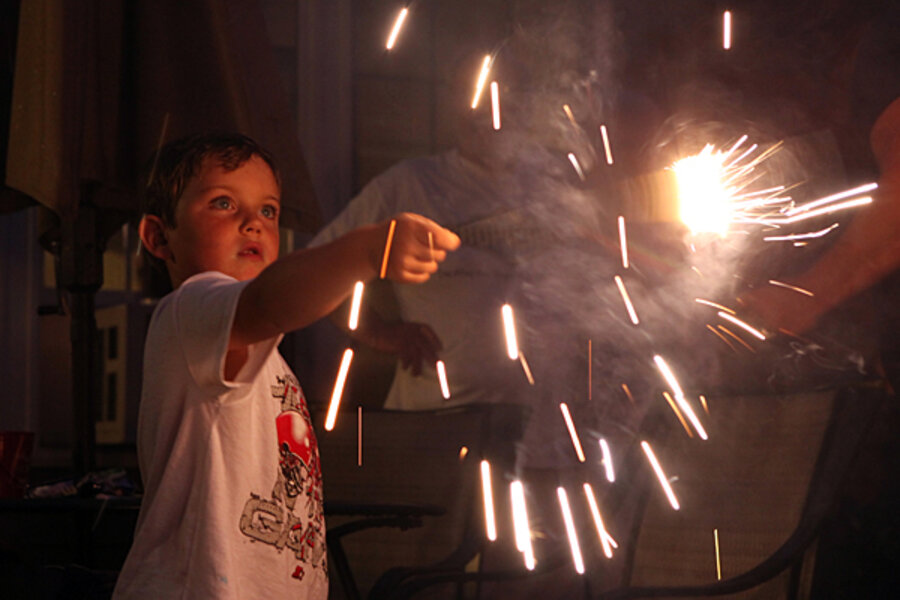As fireworks proliferate, injuries haven't. What does that say about safety?
Loading...
| Nashua, N.H.
The fireworks display that went horribly awry at a Pelham, N.H., home on July 3 – reportedly injuring 11, including five children – has prompted some calls for a rethinking of liberal fireworks laws.
But fireworks advocates insist the industry’s track record is a good one, with the rate of injuries on the decline even as more states loosen restrictions.
Last year, there were at least four deaths and an estimated 9,600 emergency-room injuries related to fireworks, the US Consumer Product Safety Commission reported in June.
Since 1996, the number of injuries per year has ranged from 7,000 to 11,000, but the differences have not been statistically significant.
But purchases of fireworks have been on the upswing – with annual revenue from consumer fireworks valued at about $650 million in the US. So the number of injuries in proportion to their use has gone down, fireworks groups say.
From 2000 to 2012, the injury rate declined 43 percent, the American Pyrotechnics Association (APA) reports. The late 1990s saw six to eight injuries per 100,000 pounds of fireworks purchased, but in the 2000s, the rate dipped below four per 100,000 pounds.
States that the APA says allow some or all types of consumer fireworks permitted by the federal government have increased to 46 plus the District of Columbia. The four states that still ban all for individual purchase: Delaware, Massachusetts, New Jersey, and New York.
Most states, including New Hampshire, have some restrictions on what people can buy and where fireworks can be used, but at least five have broadened what’s allowed during the past two years, according to the APA.
“While the number of fireworks-related injuries … has declined significantly, this is not a time for consumers to be lax about safety,” said Julie Heckman, executive director of the APA, in a statement last month.
Police and fire officials say they are investigating the exact cause of the Pelham fireworks explosion. A police statement did indicate that a large amount of fireworks were in and around the home. Injuries included serious burns to an 8-month-old and a 2-year-old, the Lowell Sun (Mass.) reports.
Fire Chief Jim Midgley said the town had not received complaints about what is reportedly an annual neighborhood fireworks display at the home, but added that the incident “warrants further investigation and re-evaluation of what the current statutes are in the state of New Hampshire,” the Lowell Sun reports.
The Fourth of July is the time of year when most fireworks injuries occur.
According to the US Consumer Product Safety Commission’s report on 2011:
- 65 percent of fireworks injuries took place between mid-June and mid-July.
- 26 percent of injuries were sustained by children under 15 (and the year before, the figure was 40 percent).
- 68 percent of the injured, and all four of the fatalities, were males.
Sparklers are often seen as harmless fun for children, but they will be the focus of an education program soon, said Inez Tenenbaum, chairman of the US Consumer Product Safety Commission, at an APA conference in February. In 2011, sparklers caused 1,100 emergency room visits.
“The Internet has facilitated greater exposure to safety information about sparklers, but it also has created challenges,” said Ms. Tenenbaum, whose commission has developed fireworks safety tips. “It is especially important that we warn parents about … teenagers who go on YouTube and watch how to make sparkler bombs.”








